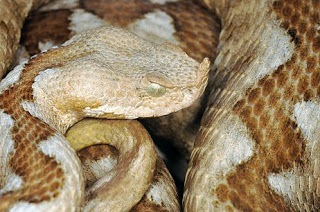KayaKoy, A Greek ghost town in Turkey
Kayaköy (stone village) A fascinating and eerie ghost town lies in the hills between Olu Deniz and Fethiye hastily abandoned when its Greek population was repatriated in 1923 after the Greco-Turkish war. Since then the town has been left bare to the elements and hundreds of intact but roofless houses sit empty staring across the valley.
For 8YTL you can wander the houses, shops, schools, windmills, tavernas and churches of this beautiful and serene place. Entering the houses is weird as you get a feeling of being somewhere you shouldn't be, as if someone had left their front door open and you
took it upon yourself to nose around. Even the goats that wander the village chewing on weeds have a tendency to look at you like an unwelcome interloper. The absence of sound is striking and even though we were virtually the only visitors we still spoke in hushed tones. Its like a community in stasis except without the people and its not much of a push of the imagination to picture the narrow streets bustling and the whole town pulsating with life.
took it upon yourself to nose around. Even the goats that wander the village chewing on weeds have a tendency to look at you like an unwelcome interloper. The absence of sound is striking and even though we were virtually the only visitors we still spoke in hushed tones. Its like a community in stasis except without the people and its not much of a push of the imagination to picture the narrow streets bustling and the whole town pulsating with life.
Almost all of the houses have water cisterns at the side that hold between 4 & 8 tons of water. Most of the houses have no roofs, windows or doors as the roofs of straw and mud collapsed without regular maintenance and much of the wood was pilfered after local government allowed the removal of timbers after an earthquake in 1957. You can get a sense of the hierarchy as one side of the town has larger houses with garden and patio areas as well as wider streets. Some of the houses closer to the road and the valley that is occupied by Turkish households have been restored and are occupied there is also an opportunity to enter a house that has been fully intact since the Greeks left and has some furniture and artefacts.
One of the churches has an interesting bone depository where the bones of the dead are collected after apparently being buried in a temporary grave then exhumed washed with wine and stored in the bone depository, this of course only adds to the eeriness of the entire place particularly when combined with the constant screeching of the birds coming from the church.
History
Kayaköy know by the Greeks as Levissi was a town of Greek speaking Christians with a population of approximately 2000 in 1900. The town was established on the ancient Lycian site of Carmylessus after the origanal town of Levissi located on Gemiler Island was repeatedly attacked by pirates and raiders (around 700AD) forcing the population to flee inland the new Levissi prospered and grew until it was abandoned in 1923 at the end of the Greco-Turkish war. A population exchange was agreed between the Turkish and Greek governments affecting around 2 million people who were effectively de-naturalised then forcibly removed back to homelands many had not previously known.
Since the expulsion were based purely on peoples religious identity many of the 'Greeks' that were removed from Turkey were Turkish speaking Christians likewise some of the expelled 'Turks' were Greek speaking Muslims.
The Greeks of Levissi moved to a poor suburb of Athens living in refugee housing where they founded Nea Levissi. The Turks that came from Greece to live in Kayaköy were mostly farmers from Macadonia who were ill suited to the town and not used to the climate. They were also scared by rumours that the departing Greeks had poisioned the wells, they mostly migrated to other parts of Turkey in search of suitable farmable land leaving Kayaköy empty.Greeks and Turks had lived side by side in Kayaköy for years with the Turks occupying the valley floor and farming for a living and the Greeks occupying the town on the hillside and were mostly professional tradesman.
Today in Kayakoy there remains about 500 hundred houses plus two Greek orthodox church's, school, shops, tavernas and 17th century water fountain. The town is protected by the Turkish government and it is rumoured they intend to do a large-scale restoration. Kayaköy was adopted by UNESCO as a World Friendship and Peace Village.
Getting There
It is easy To find a day trip to Kayakoy from Olu Deniz, Fethiye or Hisaronu. It is easily accessible by car. There is also an hourly Dolmus that runs between Hisaronu and Kayakoy. We choose to stay there for a couple of nights as it is peaceful and uncrowned. There are a few pensions in the valley all of which are very reasonably priced. We stayed at the Selcuk pension which had some nice balcony rooms that overlooked the valley and deserted town.
Present day inhabitants of Kayakoy
Kataponagia Greek Orthodox Church.
Old Kayakoy family portrait.
Kayakoy Wedding.
.
Around Kayakoy
Faralya
Gocek
Gocek Island
Kabak valley
.













Comments
Our captain and crew were great, even made a special stop.Food was all delicious and fresh,we even enjoyed a barbecue on the boat.
Would definitely recommend doing this cruise and even planning on taking a group pf friends back again next year.
We highly suggest and recommend !!!
Also some nice eateries & bars on main street.